Arecibo isn't the first radio telescope to unexpectedly fail. Here's what we can learn from Green Bank's collapse.
"That's seared into your memory," Green Bank Observatory's then-director said of the collapse. "It's really crushing."
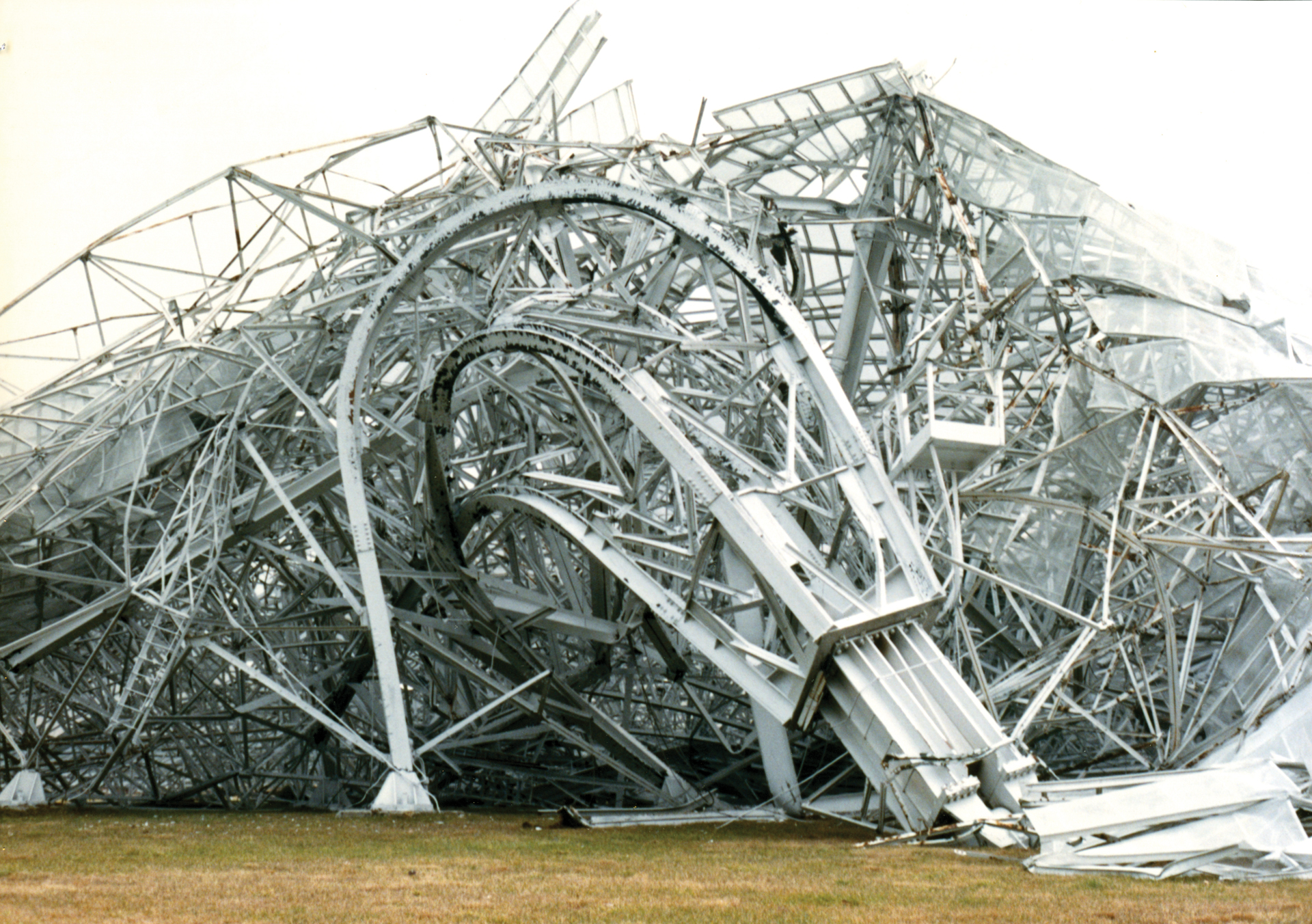
George Seielstad knows what it's like to have a massive telescope fall apart on your watch.
Seielstad was director at Green Bank Observatory in West Virginia when he got a very bad call on Nov. 15, 1988. "You have a telescope down," the voice on the phone said. It could have been no big deal, a minor electronics failure, perhaps. But it was much worse. The observatory's prime 300-foot (91 meters) telescope was the most literal definition of "down" — it had simply collapsed, with no warning.
"That's seared into your memory, it's really crushing," Seielstad told Space.com. He drove out that evening to see the telescope for himself. "It was a mess. It was a twisted wreckage."
Related: Losing Arecibo Observatory would create a hole that can't be filled, scientists say
It's a story not so different from that of the Puerto Rican Arecibo Observatory's massive radio telescope, which the National Science Foundation (NSF) announced this week it would decommission after two failed cables made the structure too delicate to safely repair. Although the heavy science platform suspended over the telescope's massive dish is still hanging, engineers don't see a way to stabilize the structure without putting lives at risk, the agency announced on Nov. 19.
For Seielstad and Paul Vanden Bout, who was at the time director of the National Radio Astronomy Observatory (NRAO), which ran Green Bank, the news from Arecibo is a grim reminder of their own experience of just how badly — and unexpectedly — things can go wrong with massive instruments.
"It's sort of eerie," Vanden Bout said. "It's a reminder that telescopes do age and fundamental things like metal fatigue and cracks and cables and stuff like that can catch up with you."
Get the Space.com Newsletter
Breaking space news, the latest updates on rocket launches, skywatching events and more!
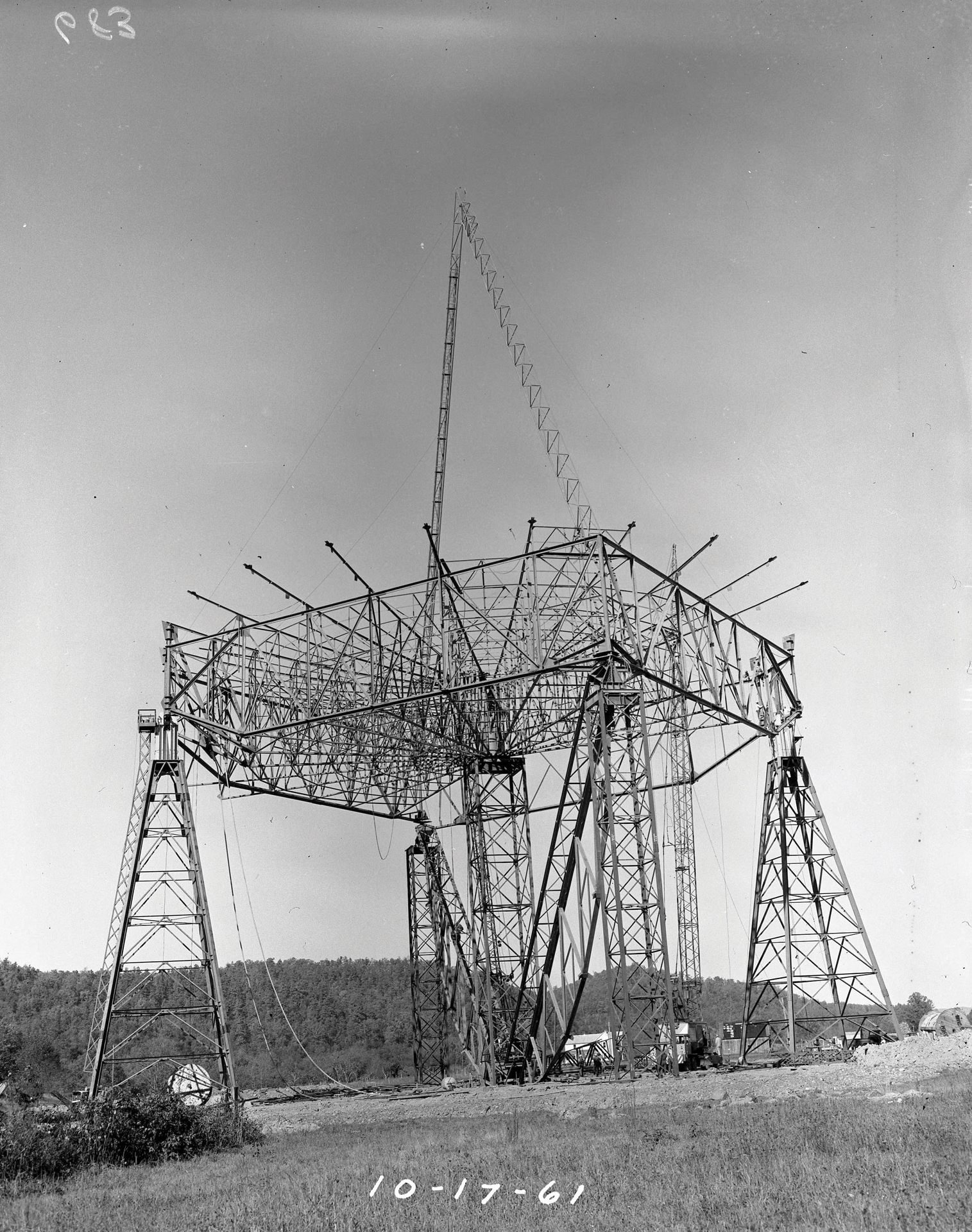
In 1988 at Green Bank, the 300-foot dish was one of two telescopes at the observatory and spent most of its time conducting survey work. Although the telescope could only tilt from north to south, combining that control with the movement of Earth below meant that astronomers could pan the sky, looking for sources of radio waves.
It was just that sort of research that the telescope was conducting at 9:43 p.m. that fateful night, when things fell apart. The telescope operator, working in the building below the dish, heard clattering as telescope debris fell into the building — far enough away that he could safely leave.
That's when Seielstad got the call he remembers so clearly. He said that in some ways, the situation he faced was straightforward. "I could tell there's no use looking at this wreckage and assuming, 'Why don't we start repairing it?' There was no hope," he said. "You think, well, that's the end."
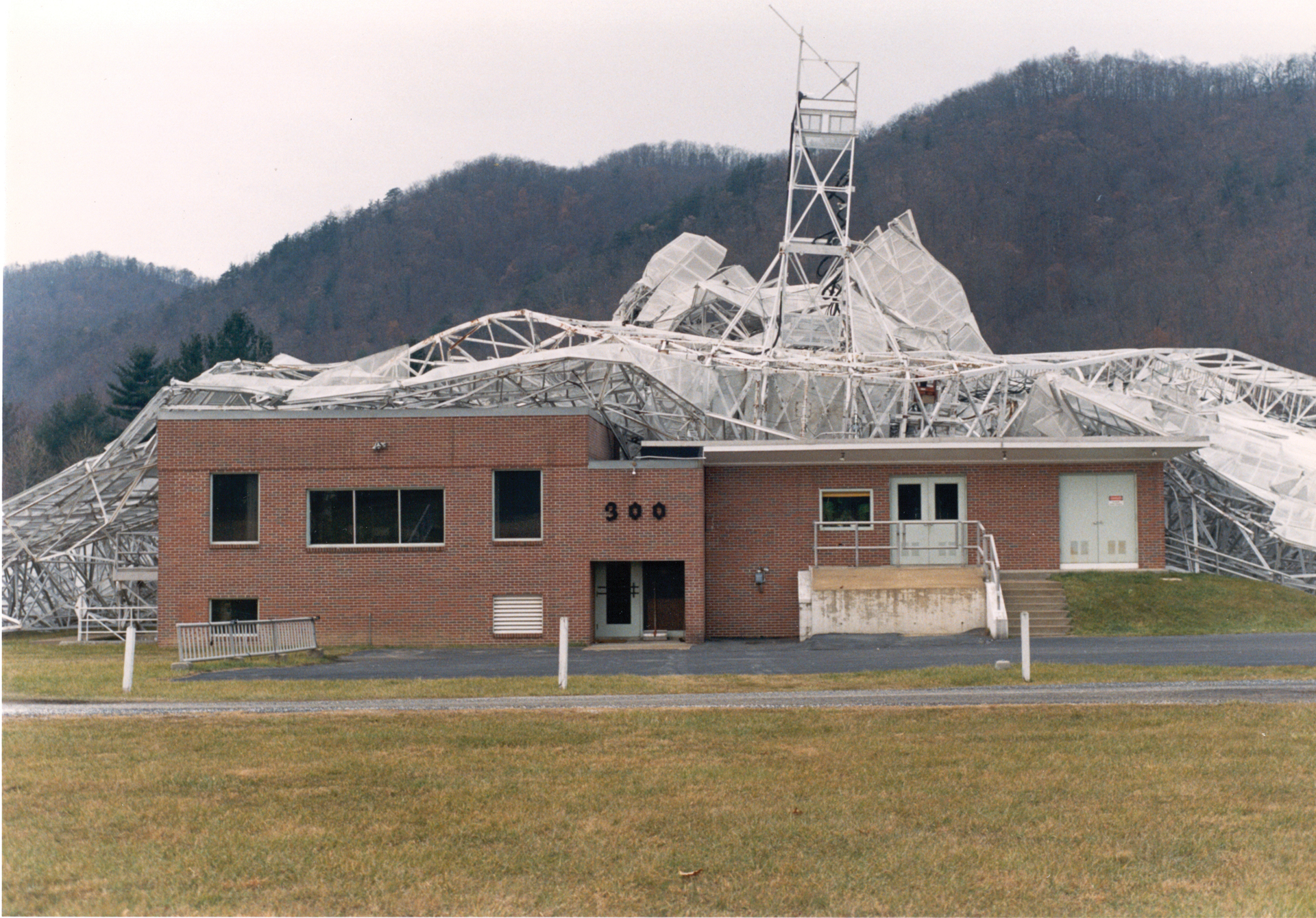
And of course, he had to share the bad news with Vanden Bout, who remembers the initial focus on safety, an emphasis the NSF has cited in its response to the damage at Arecibo. "The first thing was to secure the site, make sure people didn't poke around in the wreckage," he said. "Some of it was under strain and it wasn't clear that it wouldn't snap loose."
Then, it was time to investigate the failure. Engineers inspected the wreckage and identified what was eventually determined to be the weak link. "When that one joint… gave way, then you weaken the next spot, and the next spot, the next one — it just sort of ripples 'til the whole thing collapses," Seielstad said. "It was kind of subtle until it was catastrophic."
He remembers trying to cushion the blow by focusing on what would come next. Here, Green Bank had two key advocates: West Virginia's senators at the time, Robert Byrd and Jay Rockefeller. Both were fond of the observatory and felt it was an important economic and scientific asset for the state; Seielstad said he showed Rockefeller around the wreckage within the days following the collapse.
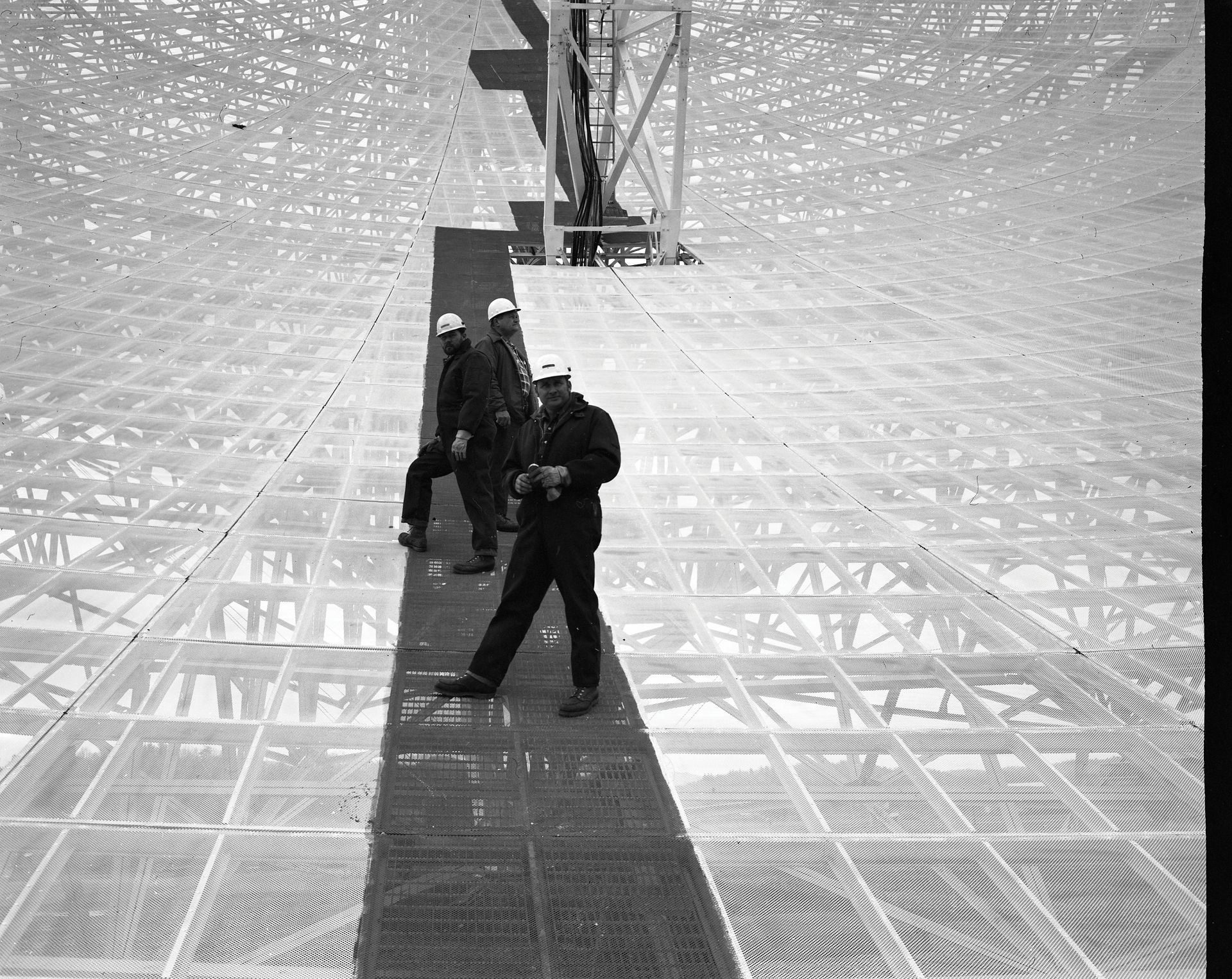
Byrd and Rockefeller both wanted to fight for the observatory's survival, and Byrd was a particularly powerful senator at the time. Vanden Bout said that meetings about the politics of a replacement consumed his days. "I didn't have a lot of time to reflect on the loss of the thing and my own stresses," Vanden Bout said. "That just got pushed to the background."
Those meetings resulted in the observatory's second wind, as Byrd pushed through funding for a 328-foot (100 m) fully steerable radio telescope that would eventually be named in his honor. That telescope began observations in 2003 and continues to operate today; it had partnered with Arecibo Telescope on several projects.
But Green Bank nearly got a very different replacement facility, Vanden Bout said. "For a while, they toyed with the idea of putting one of the LIGO detectors in Green Bank," he said, since getting the gravitational-wave detectors online was a key priority for NSF at the time.
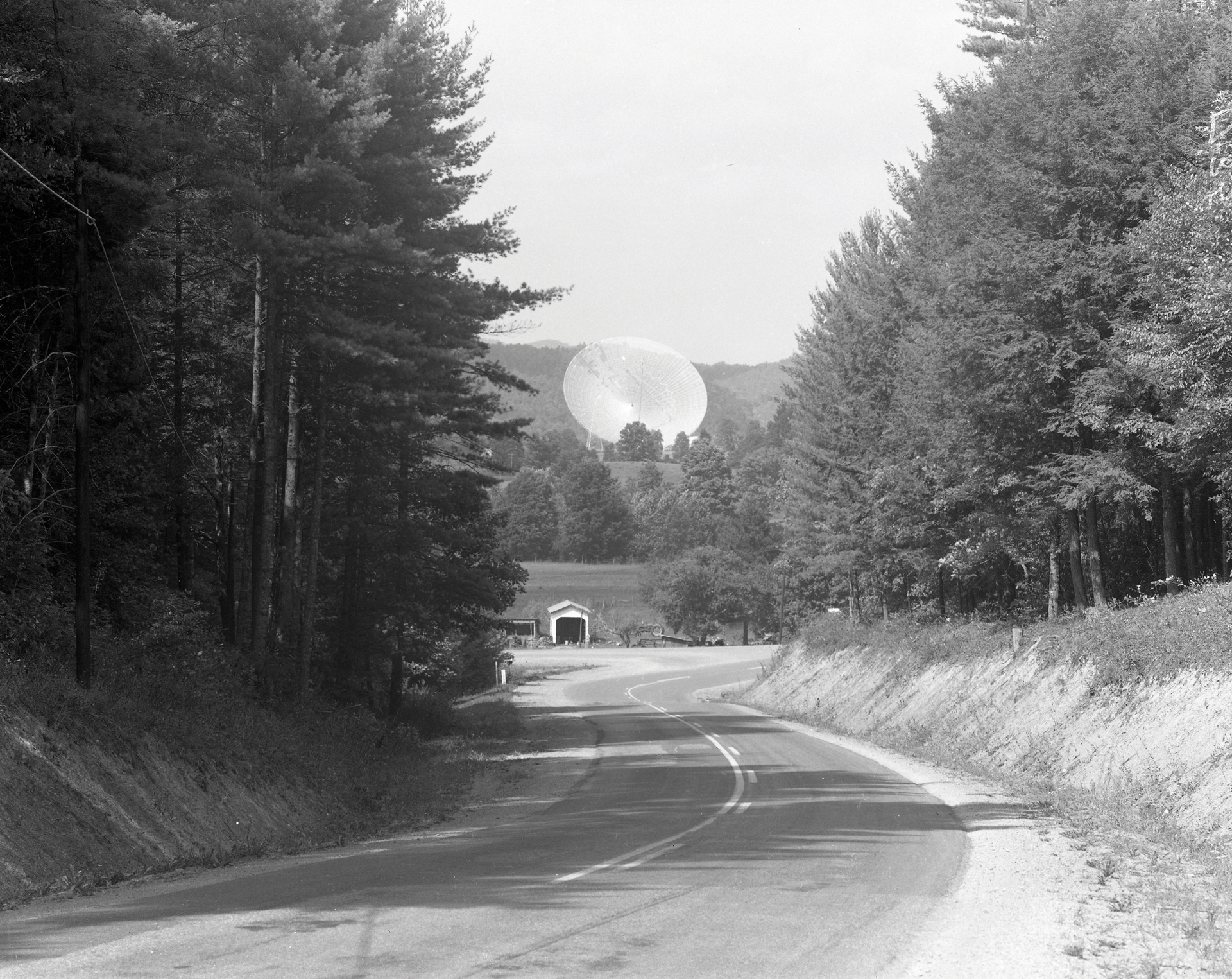
"Green Bank wasn't a great site for it because of the terrain — you had to have some bridges and tunnels for these big arms," Vanden Bout said. "But in the end, Byrd decided he wanted a telescope, not LIGO — it had nothing to do with the science; he thought it would be of more economic benefit to West Virginia: bigger operating budget, more people, more tourists, etc."
But Byrd's focus on replacing the collapsed telescope wasn't just about pulling in money, Seielstad said of their meetings in the wake of the disaster; he also displayed a genuine interest in astronomy, and both senators seemed to grasp the importance the lost telescope had held in the scientific landscape of West Virginia.
"We were lucky," Seielstad said, "we had two well-placed, powerful senators who sensed the loss to the state and I think to the nation."
Puerto Rico doesn't have that benefit; instead, the territory is represented in Congress only by one non-voting member. Both Seielstad and Vanden Bout, looking back on their experience in the wake of the Green Bank telescope's collapse, suspect that Puerto Rico's lack of representation may stymie or slow any hopes to build something new at the site after the current telescope is demolished.
"Politically, they don't have that much clout, and so it makes it difficult," Vanden Bout said.
That challenge comes despite the fact that both the Green Bank and Arecibo observatories have played crucial roles in their neighborhoods. Both are considered local icons and are major scientific institutions in areas where such facilities are rare. Green Bank's visitor center didn't exist when the 300-foot telescope collapsed, but Arecibo's visitor center opened in 1997 is a regular field trip destination for the island's students. It's unclear whether the NSF can save the facility, although officials have said that's a key goal.
And that's the biggest difference, perhaps, between the two telescopes' sudden dooms: At Arecibo, the telescope is technically still standing. The dish sports a massive gash, but that would be easy to fix, and gravity hasn't yet won its battle with the facility's 900-ton suspended science platform.
Related: The Arecibo Observatory: Puerto Rico's giant radio telescope in photos
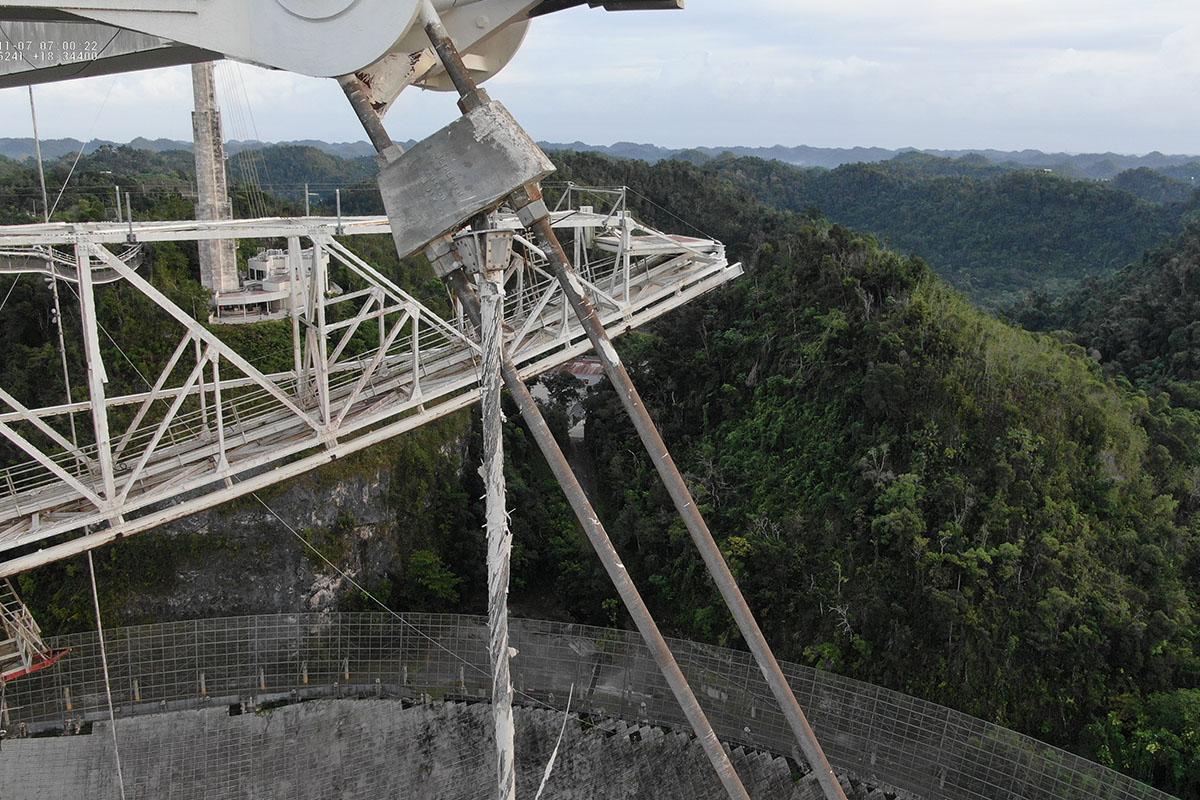
There are probabilities to estimate and values to consider. How risky would it be to get a clearer sense of the telescope's situation and try to stabilize it? What are the odds someone would die in the process and never again see the stars that Arecibo has done so much work to study?
At Green Bank, those were never questions.
"For me, there was no decision," Seielstad said. "There was no possibility that we would just go through some rubble and make it turn into a telescope."
"It's an emotional disaster, but if you have any realism in you, you know that's history. It's gone."
Email Meghan Bartels at mbartels@space.com or follow her on Twitter @meghanbartels. Follow us on Twitter @Spacedotcom and on Facebook.
Join our Space Forums to keep talking space on the latest missions, night sky and more! And if you have a news tip, correction or comment, let us know at: community@space.com.

Meghan is a senior writer at Space.com and has more than five years' experience as a science journalist based in New York City. She joined Space.com in July 2018, with previous writing published in outlets including Newsweek and Audubon. Meghan earned an MA in science journalism from New York University and a BA in classics from Georgetown University, and in her free time she enjoys reading and visiting museums. Follow her on Twitter at @meghanbartels.









